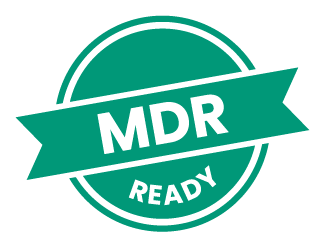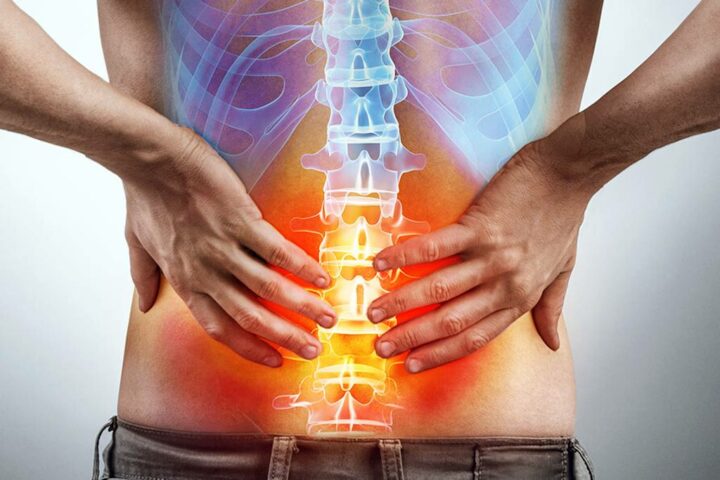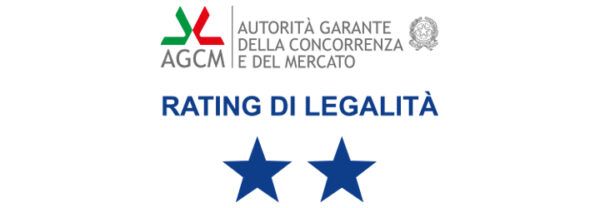The term “lumbago” comes from two Latin words: lumbus and algia. The first indicates the muscles on the sides of the spine. The second word originally comes from the Greek term algos, meaning pain.
Today, lumbago is also commonly associated with lower back pain, from just under the ribs down to the buttocks. If the pain affects the upper part of this area of the back, it is generally referred to as ordinary back pain. While if it affects the lower area, it is often referred to as sacral pain. Specifically, the term lumbago indicates painful symptoms localized in the posterior region of the trunk and, with lumbosciatica, a pain that involves the lumbar area and the regions of the branching of the sciatic nerve (sciatica).
There are two main types of lumbago, or lower back pain. Let’s take a look at them together.
The difference between acute and chronic lumbago
Lumbago is subdivided into:
- Acute lumbago, if it lasts less than 6 weeks. This is due to a sudden movement, excessive effort or a muscle injury that causes intense pain. This very common acute form of back pain, which affects the lower back, is commonly described as “putting your back out”. In this case, we shouldn’t be too worried since acute lumbago does not cause any particular or permanent damage. However, it is important to analyse the evolution of the onset of the pain, in order to understand one’s general health conditions and whether there are other factors that influence the pain. This analysis is important to exclude cases of chronic lumbago.
- Subacute lumbago, if it lasts between 6 and 12 weeks.
- Chronic lumbago, if the pain continues for more than 12 weeks, uninterruptedly. In this case, in addition to the main injury, other complications occur that may be linked to the nervous system, anxiety, stress, and one’s general state of health, including other pathologies and health interventions. Specific tests are needed to identify the exact nature of the problem. For this reason, chronic lumbago is also sub-classified into:
- Non-specific chronic lumbago, unless it is attributable to a known cause;
- Specific chronic lumbago, if attributable to specific vertebral pathologies, such as trauma, neoplasms, infections, inflammatory diseases, spondyloarthritis, or degenerative discopathies);
- Radiculopathy, referring to a pinched nerve.
Back pain: diagnosis
Lumbago is a complex and multi-factorial condition.
A general practitioner should build the first clinical picture, requiring a careful diagnostic assessment to identify the most suitable therapeutic or rehabilitative treatment plan.
To classify the lumbago in a precise category, the doctor bases the diagnosis on a detailed interview with the patient, an in-depth clinical analysis, and complementary tests.
The doctor also carries out simple physical tests to understand if the pain is nociceptive (signalling harm to the body) or neuropathic (involving nerves), and consequently evaluate a therapy consistent with the type of pain.
In the case of possible infections, inflammations, tumours, pelvic or abdominal diseases or fractures, the doctor can prescribe a radiological examination, or x-ray, to be carried out. It is not a given, however, that, if something emerges, it is the cause of the lumbago. For this reason, it is always essential to consider the patient’s clinical history.
Who to contact?
Once the cause of the lumbago has been identified, the doctor can refer the patient to a specialist. This is usually a physiotherapist, an orthopaedist, or a neurologist. In some cases, also a surgeon, if it is necessary to assess the need for an operation. The general practitioner is therefore the primary coordinator of any treatment, which must be given in a timely and efficient manner, so that the patient can be monitored and guided towards the most suitable treatment plan, without having to act independently. For this reason, it is recommended to consult with your general practitioner as soon as you begin to suffer from lumbago.
Lumbago symptoms
Lumbago is already a symptom in itself, and not a pathology, since it is simply a pain in the posterior region of the trunk.
Most people identify lumbago as generic lumbar back pain, or pain at the back of the trunk. Lumbosciatica, on the other hand, is pain that affects the lumbar area and areas of the branching of the sciatic nerve (sciatica).
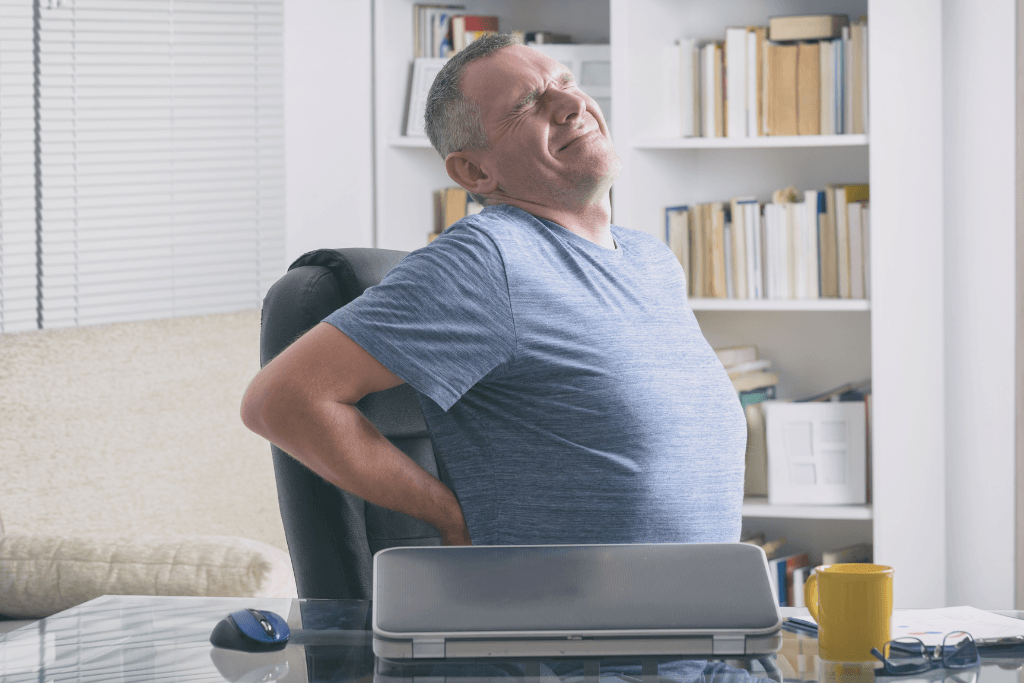
For many people with lower back pain, it is not possible to identify the specific nociceptive source, and therefore those affected are classified as having non-specific lumbago. There are, of course, certain serious causes of lower back pain, including tumours, vertebral fractures, infectiousness, and inflammatory disorders, such as axial spondyloarthritis, that need identification and specific, targeted management. However, there are only a very small percentage of cases.
In essence, lumbago can be classified according to the type of pain perceived, which can be either acute or chronic.
- Acute back pain
Acute back pain that is localized and not extending down into the legs is almost always caused by a muscle sprain or contracture.
As a rule, it manifests itself immediately on lifting a heavy weight, or making a sudden, awkward back movement.
As mentioned above, acute lumbago can last for up to 6 weeks.
- Chronic pain or chronic lumbago
If the pain persists for many weeks (or even months), it can be called chronic lumbago or lower back pain.
Unlike with acute lumbago, there can be many causes of chronic pain.
The most common include obesity, pregnancy and poor posture, as well as scoliosis (a sidewards spine curvature) and hyperkyphosis (a forwards spine curvature). In adults, another very common cause is a herniated disc.
In the minority of cases, chronic lower back pain can be caused by a form of osteoarthritis or by bone metastasis.
Lower back pain can also be a symptom of vertebral osteomyelitis (bone infection) or a vertebral compression fracture. Another factor may be radiculopathy, or a pinched nerve, which can derive from degenerative changes to the vertebrae, disc protrusions, and other causes. Finally, it can be a symptom of spinal stenosis, a narrowing of the channel that carries the spinal cord and nerves, or ankylosing spondylitis, a type of arthritis that causes inflammation.
Unlike with acute lower back pain, where pain can be relieved with rest, chronic pain needs to be investigated, in order to understand its cause. For this reason, if the pain persists for more than six weeks, it is highly recommended to consult with your doctor.
Back pain - which areas its affects the most
It is important to distinguish when the symptom is localized in the dorsal back are or in the lumbar area.
Indeed, dorsal back pain affects the area between the spine and the shoulder blades, but not the lower back. This can be due to poor posture, lesions in vertebral discs or pathologies such as pleurisy, an inflammation of the membranes surrounding the lungs and chest cavity, or pneumothorax, an abnormal collection of air in the space between the lung and chest wall. In chronic cases, other causes may be scoliosis, osteoporosis, and osteoarthritis of the spine.
Lumbago: causes
The causes of back pain can be multiple and varied, though most relate to poor posture, or sudden movements that cause strains, muscle contractures, or muscle distortions.
Furthermore, they can be subdivided into causes of a mechanical or a non-mechanical nature:
- Mechanical: disc and facet degeneration, muscle pathologies (e.g. myofascial pain syndrome), discogenic pain, with or without radicular symptoms, structural impingement radicopathy, spinal trauma pain, vertebral fractures, spondylosis, with or without spinal stenosis, and micro- and macro-instability of the spine.
- Non-mechanical: neurological syndromes, myelopathies, diabetes, tumours, polyneuropathy (acute, subacute, or chronic), mononeuropathy, myopathies, dystonic syndromes, systemic disorders, neoplasms, infections (bone, epidural, or disc), inflammatory spondyloarthropathy, metabolic bone disorders, vascular pathologies, referred pain, visceral pathologies (pancreatitis, cholecystitis, or nephritis), cardio-respiratory pathologies, rib/sternum alterations, thoracic/abdominal aortic aneurysms, and hip pathologies.
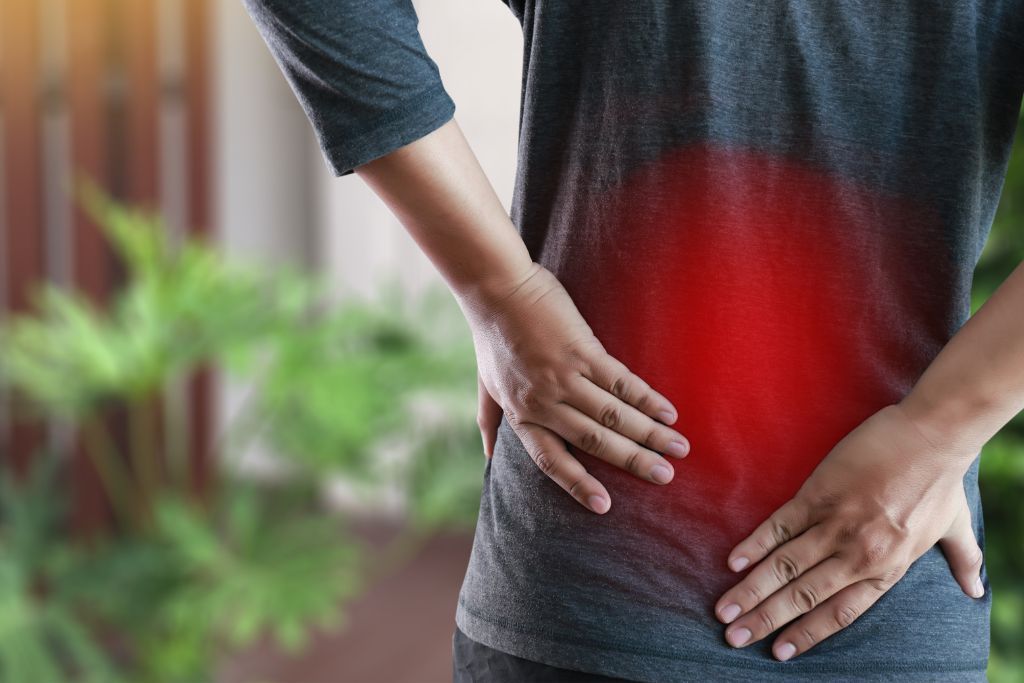
Recommended therapies for lumbago
There are many remedies to consider, and they depend on the exact type of lower back pain. Once again, it is important to distinguish between acute and chronic pain.
All therapeutic treatments aim to relieve the patient’s symptoms, or prevent possible interference with the healing process.
Remedies for acute or subacute lower back pain include drug therapy, with the use of nonsteroidal anti-inflammatory drugs (NSAIDs), muscle relaxants or opioids, physical therapy, hand massage, spinal manipulation, and the application of warm compresses.
Pharmacological therapies, with NSAIDs, opioids or antidepressants, are also used in cases of chronic lower back pain. Naturally, any drug therapy must be prescribed by the attending physician, on the basis of the patient’s clinical history.
Other treatments in the case of chronic pain may include physiotherapy, psycho-behavioural therapy, instrumental physical therapy, the management of comorbidities (i.e. the simultaneous co-existence of several pathologies in the same individual), and specialist algological consultations.
Whenever necessary, it is also recommended to educate the patient on good nutrition and maintaining a healthy lifestyle, for example, by stopping smoking, exercising more, or losing some weight.
Only in the event that conservative therapy does not produce any results will surgery be considered.
Magnetotherapy and lumbago
Magnetic therapy devices are very helpful in relieving pain and inflammation. LaMagneto, LaMagneto Pro, and LaMagneto X devices are ideal for treating lower back pain. Thanks to their pre-sets, they allow the patient to carry out the therapy independently, with just a few simple steps. Furthermore, for greater comfort during the therapy, it is possible to used a dedicated TAP2000 mat or Osteomat, to treat the back while fully relaxed, for example, when sitting or sleeping.
The use of pulsed electromagnetic fields (PEMF) is also suitable for maintenance or preventive therapy, when the first painful symptoms begin to appear. PEMFs can penetrate the cell membrane and restore the proper functioning of cells, promoting the delivery of nutrients, and the removal of harmful substances. For this reason, magnetotherapy is a very useful aid, due to its analgesic and vasodilator effects, which help reduce pain and inflammation.
Contrary to what many think, during recovery, it is essential to make an effort to return to work and household tasks, in order to quickly return to a regular lifestyle. Even bed rest should be kept to a minimum. Instead, we need to get used to and educate the body to adopt better posture during the day.
Exercises for lumbago
Back pain exercises are not only useful for therapy, but also for the prevention of lower back pain.
So, if you believe that the activities you do every day at work, or when exercising, can lead to unpleasant consequences, there are various simple exercises that can be done safely at home to prevent pain from occurring. In these cases, however, we recommend you discuss the matter with your physiotherapist, to understand which exercises are best suited to you, and how to perform them correctly. Carrying out the exercises in the proper way is essential to prevent pain and not make the situation worse.
As we have seen, magnetotherapy is an excellent ally against lower back pain. If you are looking for a device that precisely suits your needs, you have come to the right place. We offer a wide range of low frequency and high intensity magnetic therapy devices.
Sources:
- Dizionario medico Recordati LAROUSSE
- Low back pain: dall’inquadramento patologico al corretto approccio terapeutico di Giovanni Iolascon e Antimo Moretti
- La lombalgia: dalla diagnosi alla riabilitazione attraverso la gestione del dolore di Giuseppe Massazza e Alberto Magni
- What low back pain is and why we need to pay attention
- LA GESTIONE DELLA LOMBALGIA ACUTA ASPECIFICA di Dr. Gottardi Matteo

